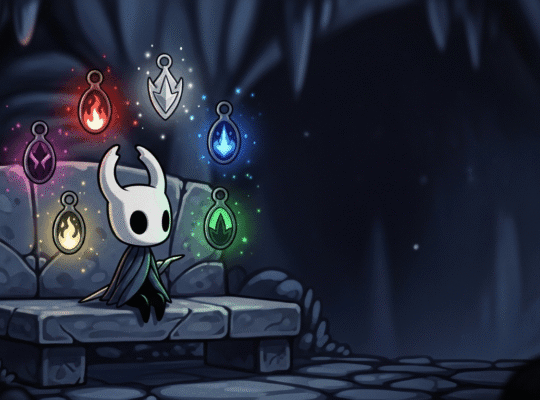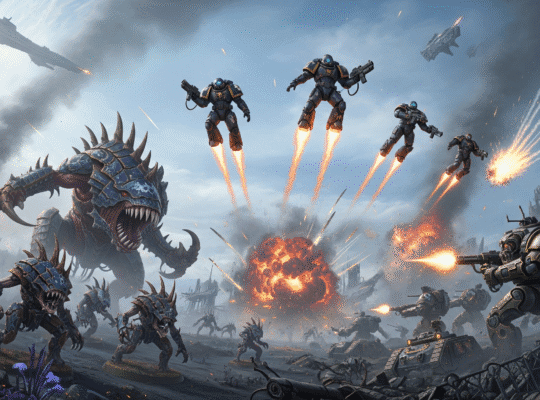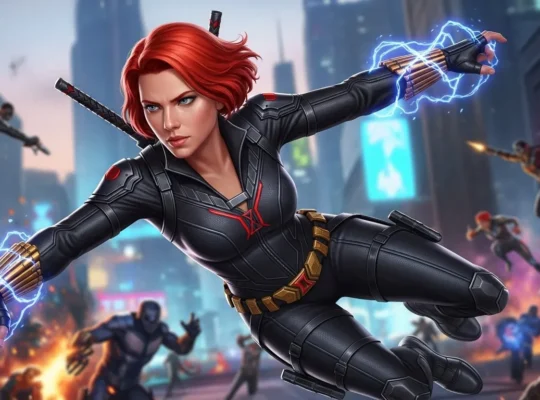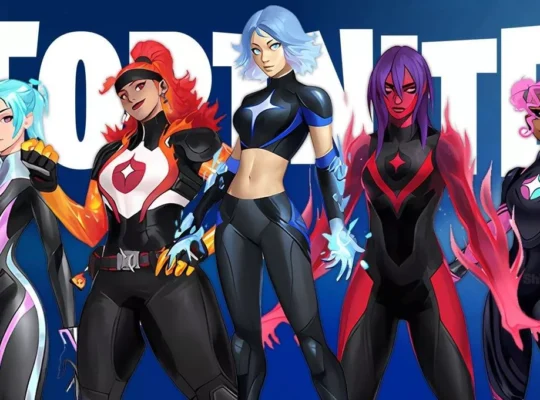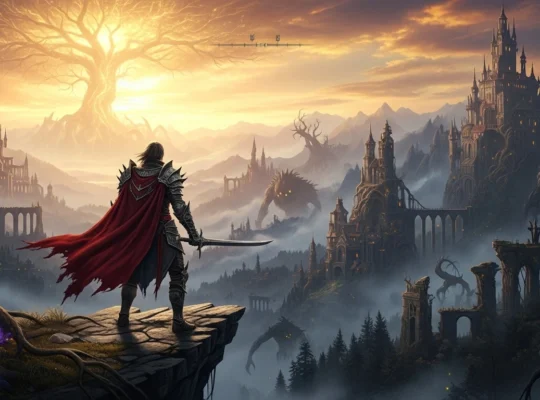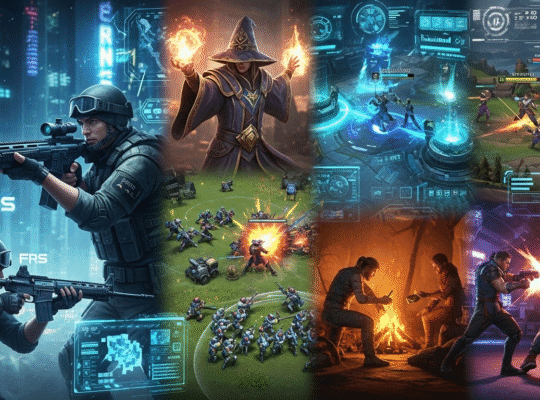Last Updated, 1 December
Ready to become the Elden Lord you were always meant to be? This isn’t your average beginner’s guide. This is your one-stop Elden Ring progression guide for pro players, speedrunners, and those diving into New Game+ for the first time. We’ll skip the hand-holding and get straight to the optimal routes, boss strategies, and build optimizations that will make your journey efficient and satisfying.
As a veteran of the Lands Between, I’ve spent countless hours in this world, perfecting builds, and optimizing runs. I remember the grind of trying to find the perfect path, but with this guide, we’ll cut through the filler and focus on maximizing your run from start to finish. This guide is built on the most recent official patches for Elden Ring, ensuring our strategy is fully viable and up-to-date.
The Current Meta: What Patches Actually Changed
Quick Links
ToggleForget what you’ve heard about fake updates or spin-offs. The official patches for the original Elden Ring have steadily refined the game, not revolutionized it. While there haven’t been any major overhauls recently, here’s what an advanced player needs to know about the current state of the game:
- Poise Damage Adjustments: The last few patches solidified the power of poise damage. Heavy weapons and certain Ashes of War now have more consistent poise-breaking capabilities. This makes “Stagger Builds” with colossal weapons more reliable than ever, allowing you to consistently break a boss’s stance for a critical hit.
- Minor Weapon & Spell Tweaks: While no major nerfs have hit the meta in a long time, minor balance adjustments have kept the field even. For example, some Incantations and Sorceries have been slightly buffed, and popular PvP weapons have seen small tweaks to ensure no single strategy is completely dominant.
- Quality-of-Life Fixes: Recent patches have focused on eradicating exploits and fixing various bugs, creating a cleaner, more stable game environment for high-level play.
In my experience, these subtle changes are what separate a good build from a great one. Knowing which weapons received minor poise buffs can be the difference between an effortless boss fight and a frustrating one.
- Fastest Rune Farming Method: Access Mohgwyn Palace Early by completing Varré's Questline. Maximize Runes by sniping the Cliffside Bird (Ranged) or using Area-of-Effect (AoE) skills (like Sacred Relic Sword's Wave of Gold) on the sleeping Albinaurics at the Palace Approach Ledge-Road Site of Grace.
- Optimal New Game+ Route: Prioritize Rennala (for Respecs) and Radahn (to unlock Nokron/Mimic Tear) early. Use the Grand Lift of Dectus to bypass most of Limgrave/Liurnia and accelerate your endgame push.
- Current Power Meta: While the RL 150 Meta remains the dueling standard, the Shadow of the Erdtree DLC introduces a separate Scadutree Blessing progression system that is paramount for power scaling within the new map. Focus your NG+ effort on collecting these.
- Stance Breaking Essentials (Poise Damage): The most reliable method to break boss poise is the Two-Handed Jump Heavy Attack. Use high-damage Ashes of War like Giant Hunt and Lion's Claw to quickly open enemies for a Critical Hit.
- Malenia Strategy: Achieve a Light Equip Load (<30%) to safely Light Roll through all phases of her feared Waterfowl Dance. Exploit her naturally Low Poise with aggressive, heavy attacks to trigger staggers.
- Radagon & Elden Beast Strategy: Use Pure Physical Damage against Radagon. For the Elden Beast, stay close to limit its ranged Holy attacks. Crucially, utilize Torrent during the fight (enabled in Patch 1.12) to quickly close the distance and avoid its AoE attacks.
The Optimal New Game+ Progression Route
For pro players, efficiency is key. We’re not here to explore every nook and cranny. This route focuses on unlocking key areas for farming, getting essential items, and tackling bosses in a smart order to maximize your time.
Limgrave (New Game+ Start)
- Immediately grab the Sacred Tear at the Church of Elleh.
- Find the Grand Lift of Dectus and activate it immediately. We’ll skip most of Limgrave and Liurnia for now.
- Quickly grab any essential talismans or unique weapons you may have missed on your first run.
- Rune Farming: The Mohgwyn Palace Path
This is the fastest, most reliable rune farm in the game.
The Fastest Way: Complete Varré’s questline. After activating Godrick’s Great Rune, visit Varré at Rose Church in Liurnia. Follow his instructions to get the Pureblood Knight’s Medal, which teleports you directly to Mohgwyn Palace, even at a low level.
The Grind: From the Palace Approach Ledge-Road Site of Grace, use a ranged weapon or spell to hit the large bird off the cliff for a quick 11,000+ runes per kill. For a faster method, use a weapon with a high AoE skill (Sacred Relic Sword) to take out the Albinaurics on the hillside for massive rune gains.
Liurnia & The Academy
- Once you’ve reached your target level (125-150 for PvP, 150+ for PvE), proceed through Liurnia.
- Focus on grabbing key spells and items for mage builds like Comet Azur and Adula’s Moonblade.
- Fight Rennala, Queen of the Full Moon, for her Great Rune and the ability to respec your stats with Larval Tears. This is vital for fine-tuning your builds.
Caelid & Altus Plateau
- Go directly to Caelid to defeat Radahn. His defeat unlocks the meteor that reveals Nokron, Eternal City, where you can find the Mimic Tear Ashes and more.
- Use the Grand Lift of Dectus to reach the Altus Plateau and begin the endgame push.
Advanced Builds for Endgame & New Game+
Forget simple Vigor builds. These are the meta builds designed to trivialize bosses and dominate PvP.
1. The Arcane Blood God (Bleed Build)
- Why it works: Despite past nerfs, bleed remains one of the most powerful status effects. Arcane scaling boosts the speed at which bleed builds up.
- Core Stats: 60 Vigor, 20 Mind, 25 Endurance, 80 Arcane.
- Weapons: Rivers of Blood (its Corpse Piler skill still shreds) or Eleonora’s Poleblade for a dual-wielding spectacle.
- Key Talismans: Lord of Blood’s Exultation, Shard of Alexander, Godfrey Icon.
- Strategy: Use the high Arcane stat to build up bleed on enemies with a few quick hits, then step back and let the massive burst damage take them down.
2. The Pure Sorcerer (Glass Cannon Build)
- Why it works: Maximizes Intelligence damage output for massive burst potential from a safe distance.
- Core Stats: 60 Vigor, 25 Mind, 80 Intelligence.
- Weapons: Moonveil for a powerful melee option, and Lusat’s Glintstone Staff for maximum spell power.
- Key Talismans: Cerulean Amber Medallion, Godfrey Icon, Radagon Icon. Strategy: Use powerful spells like Comet Azur in conjunction with the Cerulean Hidden Tear, which now only lasts 10 seconds (down from 15), to quickly end boss fights.
- Strategy: Use powerful spells like Comet Azur in conjunction with the Cerulean Hidden Tear (the duration has been 10 seconds since Patch 1.03). Line up your shot to maximize the short window to quickly end boss fights.
3. The Strength-Faith Incantation Beast
- Why it works: Combines high physical damage from colossal weapons with the powerful healing and offensive Incantations of the Faith stat. It’s a versatile build that can tank and deal huge damage.
- Core Stats: 60 Vigor, 20 Mind, 60 Strength, 40 Faith.
- Weapons: The Blasphemous Blade is a must-have. Its Taker’s Flames skill still deals massive damage and heals you with every use, though it no longer knocks down most enemies and bosses and its poise damage was significantly decreased in Patch 1.12.
- Key Talismans: Shard of Alexander, Marika’s Soreseal, Erdtree’s Favor.
- Strategy: Use a mix of heavy attacks to stagger enemies and powerful Incantations like Golden Vow (for buffs) or Black Flame (for damage) to control the battlefield.
Before you buy, check if your PC is compatible. Our new Requirement Analysis Tool takes the guesswork out of it.
Advanced Combat Tips for Pros

A pro player knows that stats and weapons are only half the battle. Your skill matters.
- Master the Roll: Don’t just spam the dodge button. Watch enemy attack patterns and learn to time your roll at the last possible second. This grants a longer invincibility window and leaves you in a better position to counter-attack.
- The Jump Attack is Your Best Friend: Using a two-handed jump heavy attack is one of the most reliable ways to build up stagger on bosses and break their poise, opening them up for a critical hit.
- Practice Parrying: A pro player uses parrying to instantly defeat certain enemies and deal huge damage to bosses. The Carian Retaliation Ash of War is a top-tier choice for this.
- Use the Environment: A skilled player knows how to use the terrain. Find elevated spots for ranged attacks, hide behind pillars, and use obstacles to your advantage.
- Learn to Stance Break: This is the meta for high-level PvE. Use Ashes of War like Giant Hunt, Lion’s Claw, or Bloodhound’s Step to quickly break an enemy’s poise.
Pro Strategies for the Toughest Bosses
Malenia, Blade of Miquella:
- The Waterfowl Dance: This is her most feared attack. The safest way to counter it is to use a Light Roll (equip less than 30% of your maximum equip load). With a light roll, you can dodge the entire attack by rolling into her first flurry and then around her for the second.
- Stance Breaks: Malenia has low poise. Use a heavy weapon with a high poise-breaking Ash of War to stagger her and get a critical hit.
Radagon and Elden Beast:
- Radagon: Use a build with high physical damage, as he is resistant to most elemental types. Be aggressive and aim for stance breaks.
- Elden Beast: This is a marathon, not a sprint. The key is to close the distance quickly. As of Patch 1.12, you can now summon your spectral steed, Torrent, during this fight. This highly anticipated change is a massive quality-of-life buff that fundamentally changes the mobility strategy against the boss’s most punishing ranged attacks.

Conclusion: Forge Your Own Legacy
You’ve already proven you have what it takes to survive the Lands Between. This guide simply gives you the tools to conquer it with efficiency and style. You’re no longer just a Tarnished; you’re a force of nature.
The gaming community is built on sharing knowledge and strategies. Mastering these optimal routes and builds will not only make your game easier, but it will also prepare you for the ultimate challenge: facing other players. The PvP meta is alive and well, and with this guide, you are in the best position to win. Now, go and claim the crown you deserve. Your destiny as Elden Lord awaits.
FAQ Section: Elden Ring Progression & Gameplay Questions
100% completion can take 130–170 hours, depending on your skill and familiarity with questlines, NPCs, and hidden areas.
- Unlock Torrent
- Defeat Margit and Godrick
- Clear Academy and Altus
- Follow major NPC quests (Sellen, Ranni)
- Farm runes and upgrade gear
- Unlock all map fragments
- Collect Great Runes
- Defeat Elden Beast and choose an ending.
Start in Limgrave, go south to Weeping Peninsula, then tackle Stormveil Castle. This path is the safest and allows you to build power before major challenges.
Most players agree Malenia, Blade of Miquella is the hardest boss. Her fast healing and second phase make her incredibly tough—even at high levels.
- Limgrave (1–20)
- Weeping Peninsula (10–30)
- Stormveil Castle (20–30)
- Liurnia (30–50)
- Altus Plateau (50–70)
- Mt. Gelmir (60–80)
- Leyndell (80–100)
- Giants/Consecrated Snowfield (100–120)
- Haligtree/Mohgwyn (120+)
- Farum Azula to Final Boss (130–150)



